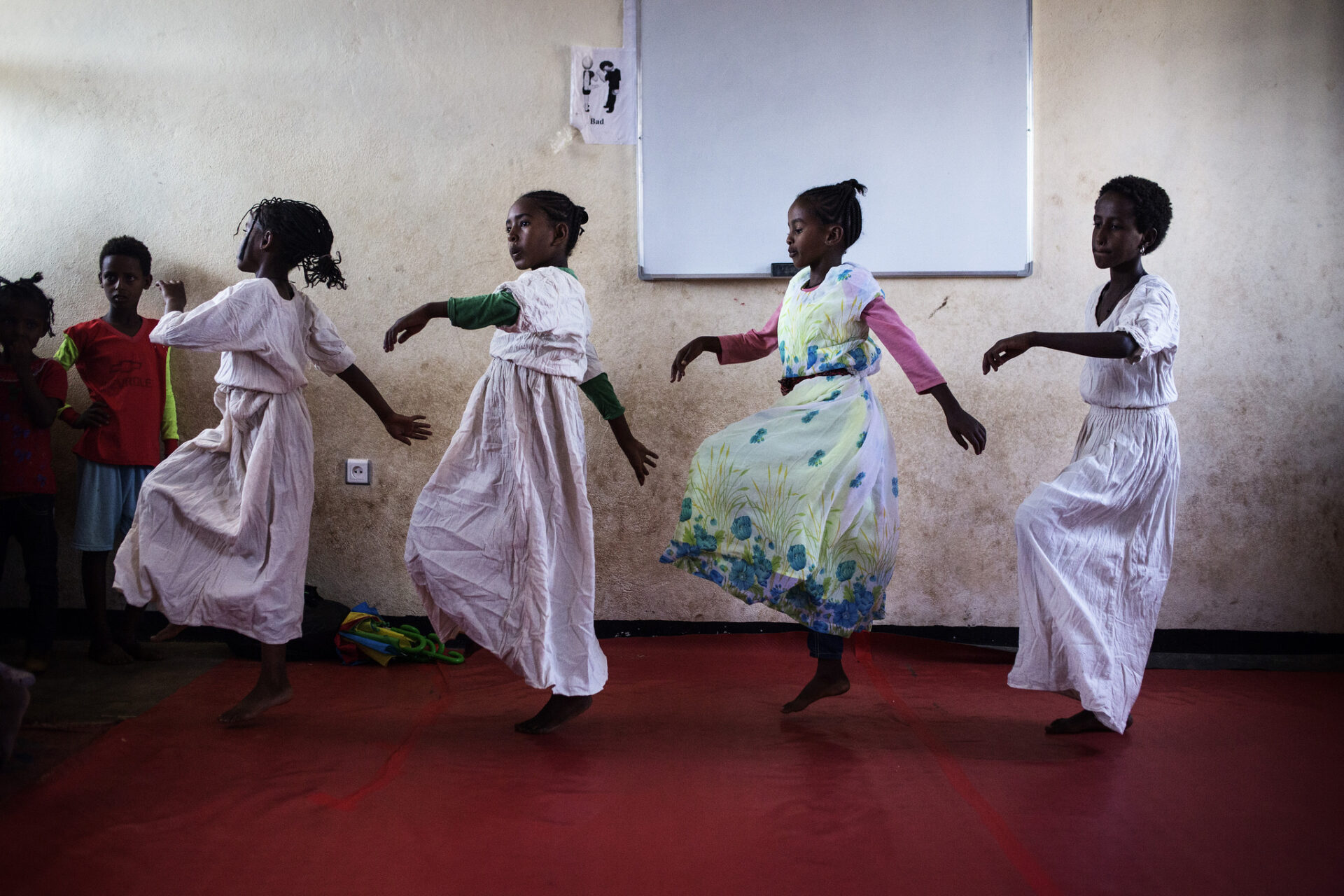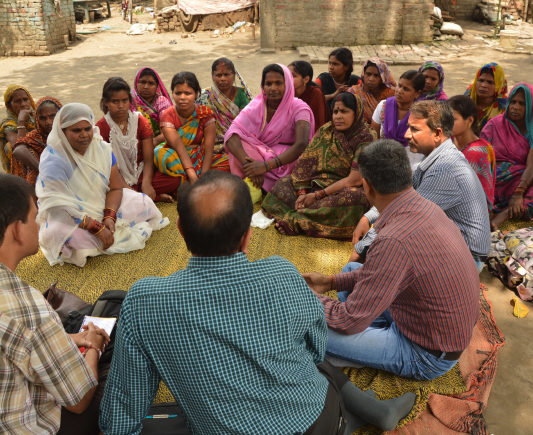Should resilience-building projects (always) be socially acceptable?

Introduction
It is imperative for humanitarian and development projects to be sensitive to, and respectful of, social norms in contexts where they are implemented. Should this systematically be the case, however, when cultural practices are harmful and might undermine resilience outcomes? How do aid agencies deal with their objectives to support people affected by crisis without contradicting local values? Can interventions lead to positive impacts without interfering with social and political issues?
This paper*draws on development literature, humanitarian guidelines, and learning from development programmes globally. It also integrates the perspectives of 19 researchers and practitioners working in sectors ranging from emergency nutrition responses to irrigation schemes, peace building and climate change adaptation, with the common objective to enhance the resilience of people affected by crises. These ‘contributing thinkers’ were asked the same question: should resilience-building programmes always be socially acceptable? Their input is weaved throughout the analysis in order to gain insight into people’s lived experiences of (trying) to build resilience.
*Download the full text from the right-hand column. Key findings and conclusions from the paper are provided below – see the full text for much more detail.
Key Lessons Learnt (in brief)
The paper draws these following conclusions (see below for more detailed key findings for good practice):
- There is a consensus that any external interventions supposed to assist people affected by crisis should be respectful of the cultural, social, legal and political environment in which they operate.
- However, whether resilience-building projects should (always) be socially acceptable does not have a yes or no answer, and accounts from practitioners and researchers who contributed to the analysis show that it very much depends on the context:
- Who is providing funds or aid?
- Who is being targeted and where?
- At what level are projects designed and implemented?
- How long is the project supposed to last?
- And who is judging what is socially acceptable?
- If resilience-building approaches are development projects that support communities in dealing with shocks and stresses, they must reduce people’s vulnerabilities, i.e. change the factors that expose people and their livelihoods to risk.
- To change these factors means to modify practices and decisions that lead to vulnerable conditions in the first place.
- Such changes are required at the local level and also more broadly to change economic and political structures that restrict development prospects.
- Keeping in mind the priorities and perspectives of local populations is paramount for interventions to respect people’s dignity and agency, and deliver aid in a way that is adaptive to local values.
- Responses from contributing thinkers have provided a few important principles summarised below:
- Apply impartial assessments to understand the vulnerability and resilience capacities.
- Respect people’s integrity at all times.
- Respond to people’s primary needs.
- Be mindful of not creating further harm and integrate protection principles.
- Find ‘boundary people’ who can bridge the divide between opposing groups and norms, who can normalise the apparently extreme, and who can build trust.
- Argue against discriminatory social norms through participatory processes and inclusive practice, ideally community-led.
- Take time, be patient and be prepared to see (or not see) results in the long run.
Key findings
The main findings of this research can be summarised as follows:
The distinction between socially acceptable outcomes and socially acceptable processes is useful to better understand if, and how, aid programmes are appropriate and according to whose perspective.
- The difficulty lies in the fact that the parameters of what is or what is not a socially acceptable behaviour will vary according to cultural and political contexts, ideologies, historical heritages (i.e. colonisation), organisations and their institutional principles, as well as individuals’ own value systems.
- The majority of international humanitarian and development actors (those consulted as part of this work and from the literature) agree that any forms of assistance must be ‘socially acceptable’, i.e. accepted by a community of people as ‘normal’ according to their set of rules and principles.
Being attentive to people’s dignity and focusing on the individual level is an important reminder of the prime motivation of humanitarian and development projects: to care about people and alleviate their suffering.
- To adopt a person-centred approach is helpful to recognise the importance of respecting and promoting the agency of people affected by a crisis. Their resilience will only enhance if aid builds on people’s capacities to choose the most appropriate response to their particular situation and needs, as opposed to reducing individuals to their vulnerabilities.
- However, what an external aid worker might consider necessary to maintain someone’s dignity might conflict with the value system in which that person lives. For example, to support survivors of gender-based violence through increasing access to protection, healthcare and judiciary services might clash with the gender norms that tolerate adolescent girls to be married at a young age and women to be sexually assaulted
- While the principle of supporting someone’s integrity is helpful to tailor assistance to their needs and views, most people do not live in isolation from other family or community members. They live with parents and/or spouses, in villages or cities; they belong to a family, a neighbourhood; and they identify themselves with gender, class, ethnic, religious and citizen groups. So, whether or not resilience building projects should always be acceptable – and to whom – depends on the scale of enquiry and it becomes more difficult to answer this question when looking not just at the individual level but also at the social and political context to which they belong.
Communities are comprised of people with different social identities and economic backgrounds. These socioeconomic attributes influence their conditions (i.e. their access to basic services and living standards); and their position (i.e. their status and power) within the community.
- For a programme to be acceptable to the diverse groups affected within a community, it must first assess what the distinct needs might be, and not assume that everyone is affected in the same way.
- This requires not only to conduct systematic and ongoing analyses of the context but also to undertake impartial needs assessment.
- An impartial assessment acknowledges barriers, and seeks to reach marginalised people to assess their needs and make sure that their views are also taken into consideration in the design of a project in spite of those barriers.
- Acting impartially means to recognise, for example, that some households might be located in hard-to-reach geographical areas, some community members might be ostracised because they are HIV-positive or because of their disability, while others might be confined to their homes simply because of their gender and their associated social status (e.g. adolescent girls).
- To conduct these impartial assessments however, could lead to lists of different, and sometimes contradictory needs and interests that reflect the diversity of community members’ experiences.
- Working in collaboration with those who hold power is paramount and this point is repeatedly made by researchers and practitioners who work on promoting social development, equality and rights.
How to prioritise the nature of relief and who needs it the most however, requires an assessment of the priority humanitarian needs. Focusing on responding to people’s basic needs constitutes a useful guiding principle for aid priorities.
- The challenge for resilience-building labelled projects is that the majority of them are not operating in the humanitarian sector.
- They are often implemented following a crisis (although many contexts characterised by chronic malnutrition, lack of basic sanitation or political instability, could arguably be considered as crises, i.e. protracted ones).
- Resilience-building projects tend to have a longer-term span and aim ‘to protect or re-establish people’s livelihoods, ensure that systems (including governance and infrastructure) are better able to withstand future shocks and also ensure that communities are organised and prepared to respond better to subsequent disasters.
The fifth principle of the code of conduct for the International Red Cross Red Crescent movement and NGOs in disaster relief establishes that projects ‘shall respect culture and custom’. However, how does this principle guide organisations to deal with cultural practices such as gender-based violence that undermine resilience?
- To protect people from harm means to intervene and alter power relations in a particular setting. In other words, interventions that are concerned with people’s rights have to be more politically-engaged, which most humanitarian agencies might not be comfortable with, if their work is supposed to be ‘neutral’.
The awareness and identification of potential unintended and negative consequences lead many projects that aim to tackle harmful norms to proceed step by step and/or to tailor activities to the targeted audience at a specific level.
- Avenues to foster transformation will differ from one project to another, and what seems appropriate in Kenya might not be the approach chosen by practitioners in West Africa.
- Key ingredients to ensure that resilience-building interventions are inclusive in their design and implementation include time and true participation (as opposed to representation only).
- To simultaneously address people’s needs, protection concerns and the uncertainty associated with environmental changes and political instabilities is possible, necessary even, but this is not the role and the responsibility of one single organisation. Collaboration, and therefore trust, are needed, as well as the realisation that some outcomes can only be evaluated after many years.
Suggested citation
Le Masson, V. (2018). Should resilience-building projects (always) be socially acceptable? BRACED.
Further reading
- BRACED: Building resilience and ending violence against women and girls in Chad
- Lessons Learned from the Peace Centers for Climate and Social Resilience: An Assessment in Borana Zone, Oromia National Regional State, Ethiopia
- BRACED: Violence against women hampers resilience efforts in Chad
- BRACED: What’s the right goal – resilience, well-being or transformation?
- ODI: Violence against women and girls and resilience
- Gender dynamics in a changing climate: how gender and adaptive capacity affect resilience
- Policy brief: How do gender approaches improve climate compatible development? Lessons from India

(0) Comments
There is no content